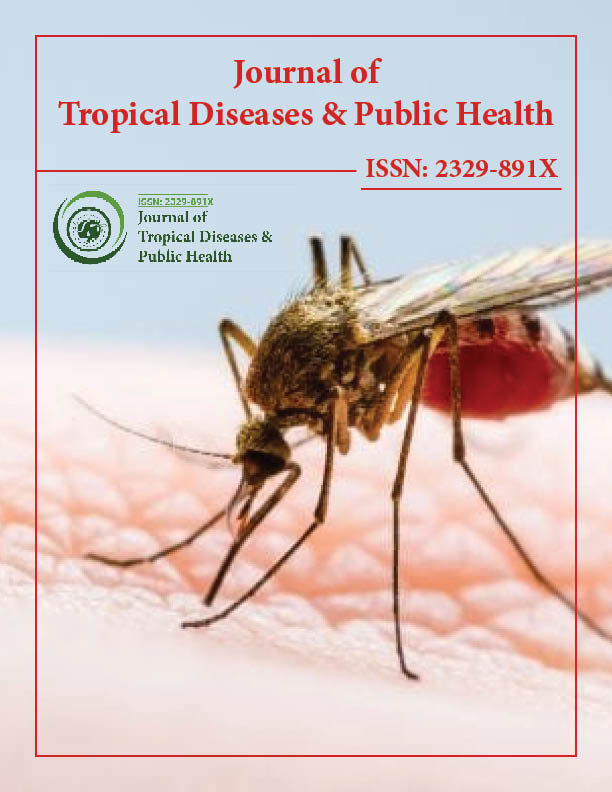Indexed In
- Open J Gate
- Academic Keys
- ResearchBible
- China National Knowledge Infrastructure (CNKI)
- Centre for Agriculture and Biosciences International (CABI)
- RefSeek
- Hamdard University
- EBSCO A-Z
- OCLC- WorldCat
- CABI full text
- Publons
- Geneva Foundation for Medical Education and Research
- Google Scholar
Useful Links
Share This Page
Journal Flyer

Open Access Journals
- Agri and Aquaculture
- Biochemistry
- Bioinformatics & Systems Biology
- Business & Management
- Chemistry
- Clinical Sciences
- Engineering
- Food & Nutrition
- General Science
- Genetics & Molecular Biology
- Immunology & Microbiology
- Medical Sciences
- Neuroscience & Psychology
- Nursing & Health Care
- Pharmaceutical Sciences
Perspective - (2022) Volume 10, Issue 12
Toxic Effects of Snake Venom and Treatment of a Snake Bite
Richard Parker*Received: 01-Nov-2022, Manuscript No. JTD-22-19394; Editor assigned: 04-Nov-2022, Pre QC No. JTD-22-19394 (PQ); Reviewed: 18-Nov-2022, QC No. JTD-22-19394; Revised: 25-Nov-2022, Manuscript No. JTD-22-19394 (R); Published: 02-Dec-2022, DOI: 10.35241/2329-891X.22.10.363
Description
The majority of the surface of the world is covered with snakes, with some areas like the Arctic, Antarctica, and numerous small islands being exceptions. Snakes are carnivorous poikilothermic reptiles that have developed venomous equipment for the purpose of obtaining food. Identification of the type of snake is crucial because the manifestation of snakebite heavily depends on the species of snake. The biting mark may occasionally be invisible (e.g., in the case of krait). When a dead snake is used as evidence, it can be identified and treated with monovalent Anti- Snake Venom (ASV) that is specific to that species. The patient's clinical symptoms might not match the species of snake used as evidence. Therefore, it is advantageous to understand the snake's look in order to identify the species. The major venomous snakes found in India are cobra (Naja naja and Naja kaouthia), Russell’s viper (Daboia russellii russellii), saw scaled viper (Echis carimtus), common krait (Bungarus caeruleus) and banded krait (Bungarusfaciatus). Snake venom is well equipped with toxins viz., hemorrhagins, proteinases, neurotoxins, cardiotoxins etc., to disturb the whole physiological system of the victim even resulting in death.
Both the protein and the non-protein components of snake venom combine to produce its deadly effects. The victim's body's inflammatory response complicates things even more.
The enzyme that has been investigated the most is phospholipase A2, which can be found in the venom of all groups of deadly snakes. Electron transfer at the level of cytochrome C is inhibited by phospholipase A2, which also makes mitochondrial- bound enzymes soluble. It harms skeletal muscle, vascular endothelium, peripheral nerve terminals, leukocytes, platelets, red blood cells, and the myoneural junction.
The local edoema, blistering, and necrosis are caused by proteolytic enzymes, while hyaluronidase aids in the propagation of venom through tissues.
Neurotoxins first cause the release of acetylcholine at the nerve terminals at the myoneural junction and subsequently destroy the endings, inhibiting future release of transmitter. In contrast, neurotoxins bind to acetylcholine receptors at the motor end- plate. All of this results in the victim's flaccid paralysis.
Smaller molecules like polypeptides are quickly absorbed into the bloodstream and induce systemic toxicity in organs with a lot of blood vessels as well as at pre and post synaptic membranes.
Conclusion
Even when no venom has been injected, some persons who have been bitten by snakes may exhibit fairly remarkable symptoms and indicators. This is a direct result of a reasonable dread of the negative effects of an actual venomous bite. People who are anxious may hyperventilate, which causes dizziness, pins-andneedles sensation in the extremities, and muscle spasms in the hands and feet. After the bite or suspected biting, some people may experience vasovagal shock, which causes fainting, collapse, and significant heart slowing. Others might experience extreme agitation and irrationality as well as a variety of deceptive symptoms.
A snakebite victim's clinical appearance varies depending on the patient's age and size, the snake's species, the number and location of bites, and the amount and toxicity of the venom.
Age, size of the victim (children are more likely to be envenomed relative to their body size), and concomitant diseases all affect morbidity and death rates (elderly patients succumb more easily to snake venom). The snake's size and the time of the bite (day or night) are not influencing factors.
Citation: Parker R (2022) Toxic Effects of Snake Venom and Treatment of a Snake Bite. J Trop Dis. 10:363.
Copyright: © 2022 Parker R. This is an open access article distributed under the terms of the Creative Commons Attribution License, which permits unrestricted use, distribution, and reproduction in any medium, provided the original author and source are credited.

